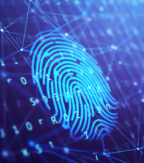Article | 14 June 2021
NFTs and copyright – complementary or at odds?

The trade of non-fungible tokens (NFTs for short) has lately garnered quite a lot of attention and interest, likely in part due to the high selling price of some NFTs. It should be uncontroversial to state that an item represented by or linked to an NFT can be protected by copyright law while some won’t. And while the purpose of NFTs is to give the owner a strong and exclusive right to the NFT itself, such ownership does not entail ownership of the copyright to the linked item. In this article we will touch upon a few possible challenges related to the conflict of ownership of an NFT and ownership of copyright to the linked item.
What rights do NFTs grant the owner?
Practically any item can be linked to an NFT and thanks to the NFTs basis in blockchain technology it is virtually impossible to counterfeit NFTs. An NFT is unique and NFT transactions are traceable (each new transaction is subsequently ordered in blocks which are added to the already existing chain). In other words, an NFT is a unique digital asset that is versatile and transactions are recorded and transparent. These qualities lend to numerous possibilities for the use of NFTs. For instance, an NFT linked to a digital artwork can ensure the buyer that the purchase relates to an authorised copy of the artwork, or a company could sell an NFT and link it to a virtual representation of a physical object. The NFT will, simplified, act like a digital certificate of authenticity for said objects. That being said, ownership of an NFT does not equal ownership of any copyright to the linked object.
Code (source code and object code) may be subject to copyright protection in many jurisdictions and such copyright may cover code imbedded in NFTs. However, the protection granted thereby is likely not going to be an important tool in protecting NFTs or what they represent since such protection is already provided for by the nature of NFTs as impossible to copy. Copyright law can however be used to protect the linked item from unauthorised use which could ensure the value of the NFT. On the other hand, if the linked item is not protected by copyright and cannot rely on the protection granted thereby, an NFT may be used to garner value into that item by asserting its uniqueness. It may therefore be argued that the sole value of an NFT is largely based on the uniqueness given to it by its nature as a blockchain and, as it is with most things, its value rest with what one is willing to pay for it.
So what is the problem?
The value of an NFT may be seen as artificial and dependant on the NFT’s uniqueness. The perceived uniqueness of an NFT may in turn be affected by the distribution or prevalence of the linked item which can be protected by copyright. There are a few things that a poten-tial buyer should consider in this regard.
First of all, an NFT may be unique and in itself impossible to copy but that does not mean that it is impossible to make a copy of the linked item, whilst at the same time such duplication could negatively affect the value of the NFT. Yet, unless also being the holder of the copyright to the linked item, the owner of the NFT lacks legal possibilities to take action on her own in such a situation. On the same subject matter, unless the seller and the buyer of an NFT has a legally binding agreement that states otherwise, the buyer may not be able to hinder the seller from linking the same item to several NFTs, which could also negatively affect the future value of the buyer’s NFT (due to it then being less unique). An owner of an NFT will therefore likely do herself a disservice in believing that ownership of the NFT will automatically grant her any exclusive rights to or control over the linked item.
Another thing to consider is that ownership of an NFT does not inherently give the owner a right to distribute or even use the linked item should it be protected by intellectual property rights (as such right rests with the rights holder). This will be even further complicated if the linked item is subject to rights held by someone other than the seller of the NFT, which may for example be the case if an artwork contains depictions of a registered trademark or if the NFT is a video with several contributors. In such case, the linked item may itself con-stitute an infringement and the NFT would then, in a sense, be worthless as both keeping the linked item and redistributing could be in breach of law.
Further, a buyer of an NFT will have to rely on the seller’s reassurance that the latter has a right to link the item to an NFT and sell it, which is not necessarily the case unless the seller is also the holder of the copyrights to the linked item. Another problem arises when such holder claims that an NFT infringes its rights, and this time it is due to the characteristics of NFTs and the underlying blockchain technology. This is because while the transactions of an NFT are traceable, the buyer and the seller may be anonymous. Thus it may be impossible for a person that has acquired an NFT in good faith to turn towards the seller for compensation in such situations. For the same reason, it may also be difficult for the rights holder to turn towards the owner of an NFT in cases when the linked item is infringed by the NFT.
Conclusion
NFTs will likely be a very useful tool in distributing unique items and ensuring authenticity of a purchase. As a consequence, for example, an artist may have an easier time selling her digital artwork if she also includes an NFT that ensures the uniqueness of the purchase and thereby gives it a higher value. For the same reason, an NFT can give a non-copyrighted item a higher value. Also, NFTs can be expected to become important in areas of business where counterfeiting physical objects is a common problem, e.g. tickets or trademarked goods, as they can be used to trace ownership.
However, the terms of the use of the linked item will be regulated by traditional intellectu-al property right law and the contract between the seller and the buyer. As regards the contract, this implies an inherent implication as the more times an NFT is traded the more likely it is that the original terms of the sale (including the terms under which use and distribution of the linked item is regulated) get lost which may give rise to conflict between the owner of the NFT and any holder of rights to the linked item. This could partially be solved by embedding protocols in the NFT which detail limitations on its use and distribution. However, the buyer of an NFT may also want to ensure that some terms are applicable to the original seller or rights holder, such as limitations to how many NFTs that may be linked to an artwork, as to not risk the NFT losing value overtime. In practice thus, there are several reasons within the distribution chain of NFTs to regulate terms in a contract, whilst excessive such regulation may conflict the nature of the NFTs as easily traded digital goods. It remains to be seen how this conflict of interest will be handled as the pontential of NFTs are explored further.
Obviously, an NFT is a digital asset and therefore holds the properties associated therewith, including existing in a space that is largely unhindered by country borders. In contrast, copyright law as well as contract law are strictly territorial which will lead to cross border differences in regulations and case law. It may also heavily vary how jurisdiction is established which brings further uncertainty for the parties involved. These are issues that likely are not going to be solved any time soon.


